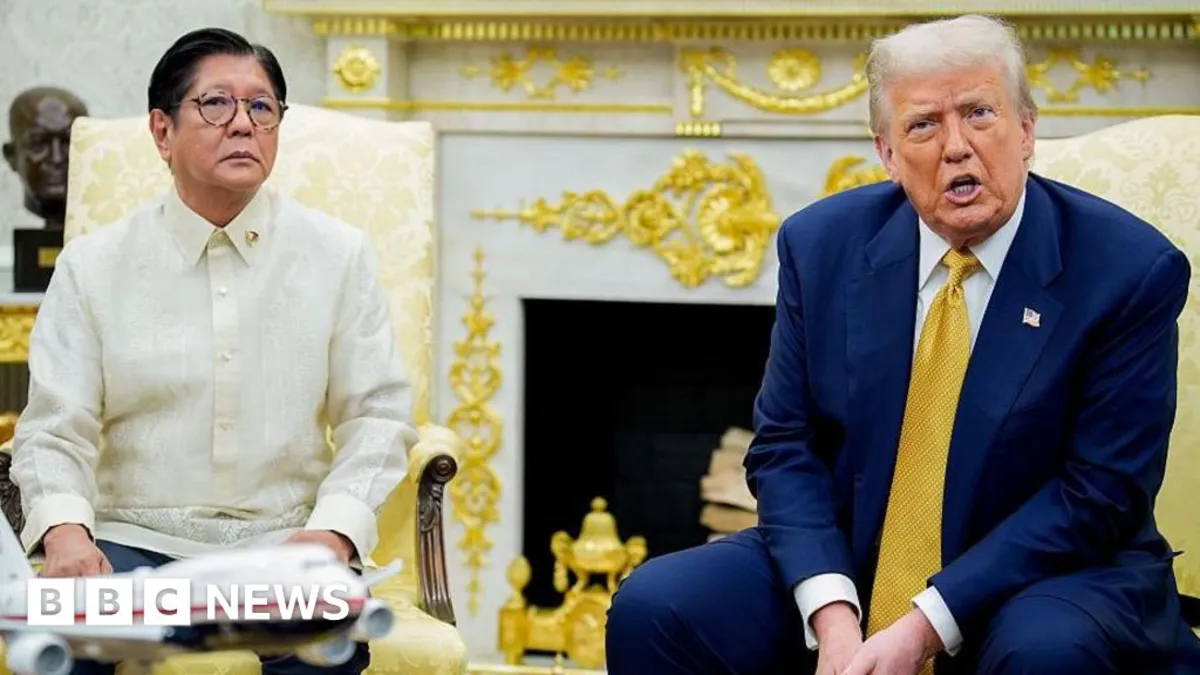
The United States is set to impose a 19% tax on imports from the Philippines, as announced by President Donald Trump following a meeting with the Filipino president at the White House. This significant tariff is part of a broader agreement, which includes the Philippines eliminating tariffs on US goods and a commitment to enhanced military cooperation between the two nations.
On social media, Trump described the meeting as a "beautiful visit" and emphasized that they had successfully concluded their trade deal. However, he did not provide additional details regarding the terms of this apparent agreement. The implementation of this new tariff marks a notable increase from the initial threats made by Trump earlier this year, particularly during the sweeping global tariffs he announced in April.
The proposed tariff plan has not yet been confirmed by officials from the Philippines. If enacted, it would place the country in a challenging position, facing a tax rate higher than what was previously indicated by Trump. BBC News has reached out to the Philippines Embassy in Washington, D.C., for further comments regarding this development.
Trump’s rationale for imposing tariffs is to encourage countries to abandon what he perceives as unfair trade practices against the United States. His administration has engaged in extensive trade negotiations with various nations globally, including deals with the UK, China, and Indonesia. However, these agreements have largely maintained high tariffs, with numerous key issues remaining unresolved.
As Trump prepares to introduce a new round of higher duties effective August 1, many of America’s major trade partners, such as the European Union and Canada, find themselves in a state of uncertainty. European officials are increasingly discussing potential retaliatory measures as negotiations appear to stall. Canadian Prime Minister Mark Carney mentioned on Tuesday that intricate discussions are ongoing, yet he remained noncommittal about reaching an agreement before Trump’s deadline. "The objective is not to have an agreement at any cost," he stated, emphasizing the need for a fair deal.
Trump’s tariff initiatives have led to considerable financial fluctuations since their initial announcement in April, positioning the US to face its highest tariff rates in over a century. Although some of the more aggressive measures were suspended, a universal 10% tariff on most goods remains in effect, alongside higher duties on specific items such as cars, copper, steel, and aluminum.
Recently, as market conditions stabilized and the US economy showed resilience, Trump has reverted to plans for increasing tariffs. He has communicated these new tariff proposals to various countries, including a recent letter to Philippine leaders indicating a 20% tariff on their goods, an increase from the 17% previously threatened.
In terms of trade volume, the Philippines is a relatively modest partner for the US, exporting approximately $14.2 billion worth of goods to America last year, which included products such as car parts, electric machinery, textiles, and coconut oil. However, the financial burden of these new tariffs is already being felt by companies. General Motors reported that tariffs had resulted in losses exceeding $1 billion over the past three months, while Stellantis, the manufacturer of Jeep, indicated costs of around €300 million (£259.6 million, $349.2 million) due to the tariffs.